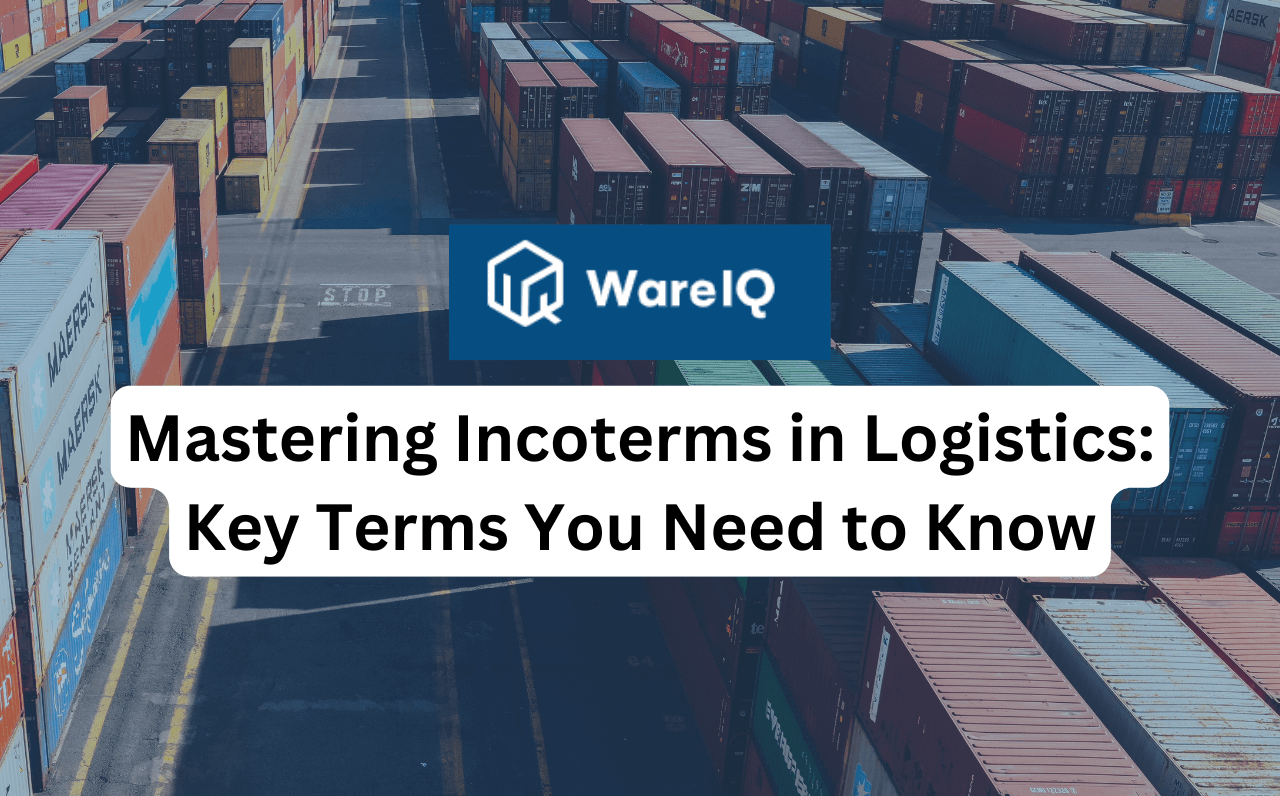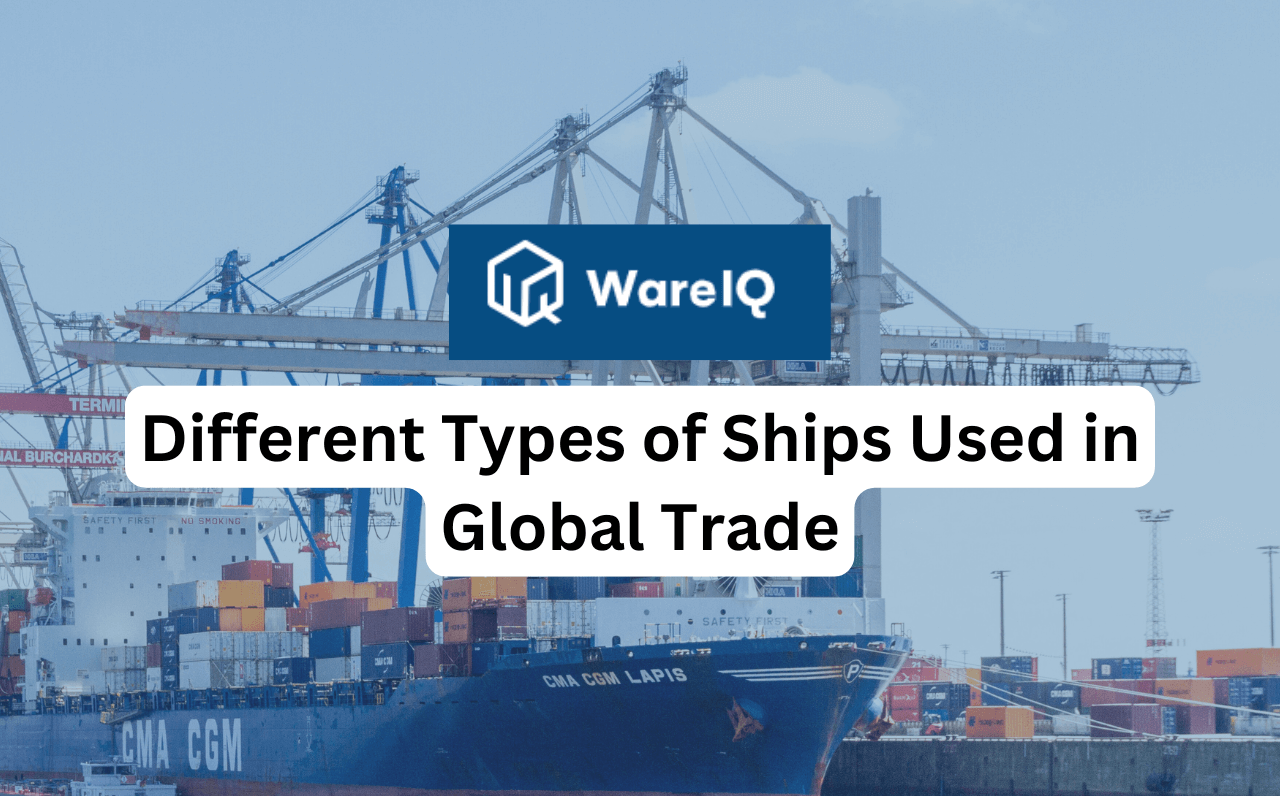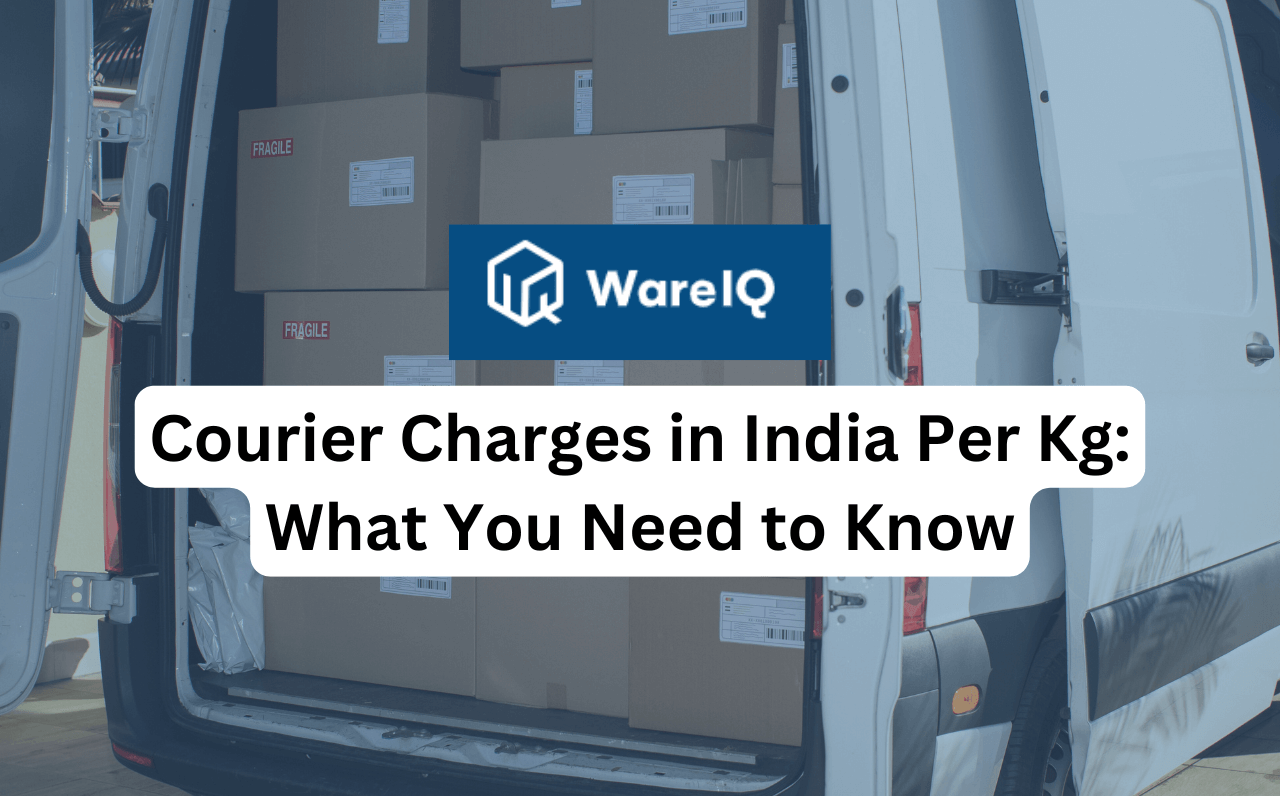Top Dropshipping Suppliers for 2025: Best Options for Your Business
Starting a dropshipping business in 2025 has never been easier, but it’s also more competitive than ever. The global eCommerce industry grew by 9.4% in 2024, reaching a staggering $6.3 trillion in sales, according to eMarketer. With millions of new entrepreneurs joining the market last year, the competition is fierce. In such a crowded landscape, finding the best dropshipping suppliers is no longer just an option, it’s a necessity. Suppliers directly impact product quality, shipping times, and customer satisfaction, which are all key to staying ahead of the competition.
The importance of reliable suppliers is also evident in customer expectations. A survey from 2024 by Statista revealed that 73% of online shoppers expect delivery within 3-5 days, putting added pressure on businesses to work with suppliers who can deliver quickly and efficiently. The right supplier can help you meet these expectations, delight your customers, and establish trust, while a poor one could result in shipping delays, negative reviews, and lost revenue.
In this blog, we’ll explore the top 12 dropshipping suppliers for 2025, compare their features, and share actionable tips to help you make the best decisions for your business. Additionally, we’ll cover essential considerations, such as how to vet suppliers effectively, minimize risks, and streamline your supply chain for maximum efficiency and profitability.
What Is Dropshipping and Why Are Suppliers So Important?
Dropshipping is a business model where online stores sell products without holding inventory. When a customer places an order, the store forwards it to a supplier who handles shipping directly to the customer.
While the concept sounds simple, the biggest challenge lies in finding reliable suppliers. Why? Because poor suppliers can lead to:
Shipping delays that frustrate customers.
Low-quality products that result in returns and complaints.
Lack of transparency makes it hard to scale your business.
This is why your choice of supplier is pivotal. A good supplier will not only ensure smooth operations but will also help you build a positive reputation with customers.
Top 12 Dropshipping Suppliers for 2025
Finding the perfect dropshipping supplier can be challenging, but the right one will set your business up for success. To make things easier, here’s a list of the top 12 dropshipping suppliers for 2025. These options are packed with features that cater to various business needs. Take your time to explore each one and find the best match for your goals.
1. AliExpress
AliExpress is a trusted platform for drop shippers worldwide, offering one of the largest product catalogues on the market. It’s ideal for beginners or those who want affordable access to trending products.
Key Features:
Over 100 million products in categories like fashion, electronics, beauty, and home goods.
Integrated tools like DSers for order automation and streamlined processes.
Global shipping to over 220 countries, makes it a flexible choice for international businesses.
Pros:
Competitive pricing, which allows for high-profit margins.
Access to a wide variety of trending and niche products.
No upfront inventory costs, making it budget-friendly.
Cons:
Shipping times can be long, typically ranging from 15 to 45 days.
Product quality can vary between suppliers, so ordering samples is essential.
Best For: Beginners and dropshippers looking for a low-cost way to source a diverse range of products.
2. Spocket
Spocket is known for connecting dropshippers with high-quality suppliers based in the US, UK, and Europe. It’s a favourite for those prioritizing faster shipping and premium products.
Key Features:
Access to suppliers in the US and Europe, ensuring quicker delivery times compared to international suppliers.
Branded invoicing to add a professional touch to your business.
Seamless integration with Shopify, WooCommerce, and other platforms for automated order fulfilment.
Pros:
Faster delivery, often within 3 to 5 days, which keeps customers happy.
Vetted suppliers offering high-quality products.
User-friendly interface that simplifies inventory management.
Cons:
Free plans offer limited access to features, and paid plans start at $39.99 per month.
Smaller product catalogue compared to AliExpress.
Best For: Dropshippers targeting Western markets who value quick shipping and quality.
3. CJDropshipping
CJDropshipping is perfect for those who want affordability paired with flexibility. With its warehouses in the US and China, it offers both competitive pricing and fast delivery options.
Key Features:
Millions of products are available at competitive prices.
Same-day order processing for many items, reducing delivery times.
Custom branding options, such as personalized packaging, to build your brand identity.
Pros:
Fast shipping with services like CJPacket and US-based warehouses.
Direct sourcing from platforms like 1688 and Taobao, helps you save costs.
Value-added services like product photography and video creation.
Cons:
The platform’s interface can be overwhelming for beginners due to the variety of features.
Best For: Dropshippers looking for an affordable and scalable supplier with branding options.
4. Printful
Printful is a trusted partner for those in the print-on-demand (POD) niche, offering customizable products like t-shirts, mugs, and phone cases.
Key Features:
Fulfilment centres located in North America, Europe, and Australia to ensure faster delivery.
Advanced customization options for products, including your own branding on labels and packaging.
Products are created only after a sale, so there are no upfront inventory costs.
Pros:
High-quality printing and durable materials.
Fast shipping times, often within 3 to 4 business days.
Easy integration with eCommerce platforms like Shopify, Etsy, and Wix.
Cons:
Higher production and shipping costs compared to bulk suppliers.
Best For: Entrepreneurs selling custom-designed merchandise and focusing on creative niches.
5. SaleHoo
SaleHoo is a reliable directory of pre-vetted suppliers offering a wide range of products. It’s a great tool for finding trusted wholesalers and manufacturers.
Key Features:
Access to over 8,000 suppliers and 2.5 million products.
Comprehensive research tools to identify trending products in your niche.
Lifetime membership option for a one-time fee, offering continuous access to suppliers.
Pros:
Verified suppliers to ensure reliability and product quality.
Exceptional customer support and educational resources for beginners.
No recurring monthly fees with the lifetime membership.
Cons:
SaleHoo is a directory, so it doesn’t integrate directly with your eCommerce store.
Best For: Beginners seeking reliable suppliers and support to start their dropshipping business.
6. Zendrop
Zendrop is designed for Shopify users who want a seamless dropshipping experience with fast shipping and branding options.
Key Features:
US-based warehouses for expedited shipping, ensuring deliveries within a few days.
Product bundling options and subscription boxes to increase customer order value.
Custom branding services for packaging and inserts to enhance your brand image.
Pros:
Faster shipping times than AliExpress.
Perfect for building a premium brand experience with custom packaging.
Intuitive integration with Shopify for automated order processing.
Cons:
Paid plans start at $49 per month, which may be expensive for beginners.
Best For: Shopify users looking to build a premium and branded dropshipping store.
7. Worldwide Brands
Worldwide Brands is a well-established directory that connects dropshippers with certified wholesale suppliers. It’s a trusted resource for experienced sellers who want guaranteed product quality.
Key Features:
Provides access to over 16 million certified wholesale products.
Suppliers are strictly vetted to ensure legitimacy and quality.
Lifetime access is available for a one-time fee, eliminating monthly subscription costs.
Pros:
Reliable suppliers who are pre-vetted, reducing risk.
Wide variety of product categories to choose from.
No ongoing monthly fees, making it a cost-effective option in the long run.
Cons:
Higher upfront cost of $299 for lifetime access.
Limited support for beginners who might need additional guidance.
Best For: Experienced dropshippers looking for a long-term and trustworthy supplier directory.
8. Modalyst
Modalyst focuses on high-quality products from global suppliers, including luxury and independent brands. It’s perfect for sellers who want to target a more premium audience.
Key Features:
Offers a curated list of luxury and independent brands, including Calvin Klein and Dolce & Gabbana.
Provides access to millions of products through its official API partnership with AliExpress.
Domestic suppliers in the US and UK ensure fast shipping for local customers.
Pros:
Access to premium, high-ticket products that attract higher-income customers.
Automatic inventory and price syncing for streamlined operations.
User-friendly platform with easy integration into Shopify and other platforms.
Cons:
Higher costs for luxury products can reduce profit margins.
Some features, such as access to premium brands, require upgrading to a Pro plan.
Best For: Dropshippers targeting high-income customers with branded and trendy products.
9. Printify
Printify is a print-on-demand platform offering extensive customisation options and multiple print providers worldwide. It’s a flexible solution for creative entrepreneurs.
Key Features:
Large catalogue of customisable products, including apparel, accessories, and home goods.
Multiple print providers are located globally, ensuring faster and more affordable shipping.
Transparent pricing with profit margin calculators to help you plan your pricing strategy.
Pros:
Flexibility in choosing print providers for competitive pricing and faster delivery.
No upfront inventory costs, making it beginner-friendly.
Integrates with Shopify, Etsy, WooCommerce, and other platforms.
Cons:
Less customization compared to platforms like Printful.
Shipping times and costs vary depending on the selected print provider.
Best For: Entrepreneurs in the print-on-demand space looking for flexible supplier options and competitive pricing.
10. Megagoods
Megagoods specializes in consumer electronics and offers a curated selection of gadgets and accessories. It’s an excellent choice for tech-focused dropshippers.
Key Features:
No minimum order requirements, allowing flexibility for smaller stores.
US-based warehouses ensure faster shipping times within the country.
Competitive pricing on electronics like Bluetooth accessories, audio equipment, and more.
Pros:
Affordable per-order fees of just $1.50.
Quick delivery for US customers, enhancing the shopping experience.
Great for niche markets in the tech industry.
Cons:
Limited product categories beyond electronics.
Best suited for dropshippers targeting customers in the US.
Best For: Dropshippers focusing on consumer electronics and tech accessories.
11. Doba
Doba is an all-in-one dropshipping platform that simplifies sourcing and managing products from multiple suppliers. It’s great for beginners who want an easy way to start.
Key Features:
Access to over 2 million products across various niches, from home goods to apparel.
Centralised platform for managing orders and suppliers in one place.
Real-time inventory updates to prevent out-of-stock issues.
Pros:
User-friendly platform designed for small business owners and beginners.
Affordable pricing plans with basic features suitable for startups.
Easy integration with platforms like Shopify and eBay.
Cons:
Limited customisation options for products or packaging.
Some advanced features require higher-tier plans.
Best For: Beginners looking for a simple and centralised way to manage their dropshipping business.
12. AutoDS
AutoDS is a powerful automation tool for dropshippers, designed to simplify everything from product sourcing to order fulfillment. It’s ideal for those looking to scale their operations.
Key Features:
Integration with suppliers like AliExpress, Amazon, and eBay for seamless product sourcing.
AI-driven product recommendations to identify trending items in your niche.
Advanced order tracking and inventory management for efficient operations.
Pros:
Saves time by automating repetitive tasks like order placement and tracking.
Access to a large catalogue of products from multiple suppliers.
Features like dynamic pricing and automated price adjustments help maintain profitability.
Cons:
Monthly subscription fees for advanced features can add up.
Beginners may find the platform’s features overwhelming at first.
Best For: Dropshippers who want to streamline operations and scale their business with automation.
How to Find the Best Dropshipping Supplier: Top Tips
Looking for the perfect dropshipping supplier? It’s one of the most important decisions you’ll make for your business, so you need to get it right. Don’t worry, follow these simple tips to find a supplier who will help you scale your business and keep your customers happy.
Define Your Needs: First, think about what your business needs. What products are you planning to sell? Who is your target audience? And how quickly do your customers expect their orders? Knowing this will help you narrow down your options and choose a supplier that aligns with your goals.
Check Supplier Reviews: Always do your homework! Look for reviews and testimonials on trusted platforms like Trustpilot or Reddit dropshipping forums. A reliable supplier will have plenty of positive feedback from other business owners.
Order Product Samples: This step is non-negotiable. Ordering samples lets you check the product’s quality, packaging, and shipping time before committing. It’s the best way to avoid surprises (and unhappy customers).
Evaluate Shipping Times: Customers love fast delivery, and so should you. Choose suppliers with local warehouses or expedited shipping options to ensure your orders arrive within 3–5 days.
Use Trusted Tools: Platforms like Spocket, SaleHoo, and AliExpress Dropshipping Center can make your search easier. They connect you with vetted suppliers and even integrate with your eCommerce store.
Test Customer Support: Got questions? Send a quick email or chat with a potential supplier to test their responsiveness. Good communication is a sign of a reliable partner.
Avoid Red Flags: Be cautious of suppliers offering unrealistically low prices, unclear policies, or slow replies. These can be signs of trouble.
Follow these tips, and you’ll be on your way to finding a trustworthy supplier who can support your dropshipping business and help it grow.
Is Logistics the Missing Link in Your Dropshipping Success?
Running a successful dropshipping business involves more than just finding the best suppliers. Have you considered how your logistics and fulfilment strategy might be affecting your growth? Here are some questions to ask yourself to determine if your logistics setup is helping or hurting your business:
Are your shipping times meeting customer expectations?With 73% of customers expecting delivery within 3-5 days, are you able to meet this demand? If not, could partnering with a logistics provider offering faster shipping options help bridge the gap?
Are you spending too much on fulfilment?Have you calculated how much your current shipping and fulfilment process is cutting into your profits? Could a third-party logistics (3PL) partner reduce costs through optimized routes or bulk discounts?
Is your brand image consistent throughout the delivery process?Does your packaging reflect your brand’s professionalism? Are you offering custom branding, such as branded boxes or inserts, to stand out in the crowded dropshipping market?
Can customers track their orders in real-time?How transparent are your shipping processes? Could a logistics partner with real-time tracking tools improve trust and reduce customer complaints?
Are you ready to scale your business?As your order volume grows, can your current logistics setup handle the increased demand? Do you have access to advanced fulfilment technology and multiple warehouses to support scalability?
If you answered "no" to any of the above questions, it’s time to rethink your logistics strategy. WareIQ, one of India’s fastest-growing eCommerce fulfilment platforms, offers solutions tailored to dropshipping businesses. From nationwide warehousing and fast shipping to branded packaging and scalable technology, WareIQ ensures your logistics are as seamless and efficient as your store.
Related read: How to Start a Dropshipping Business in India?
WareIQ: Your Trusted Fulfilment Partner for Dropshipping Success
In the competitive world of dropshipping, success isn’t just about finding the right suppliers; it’s also about delivering an exceptional customer experience. Logistics and fulfilment are the backbone of this experience, and WareIQ, India’s leading eCommerce fulfilment platform, provides all the tools you need to streamline your operations.
Why Choose WareIQ?
Nationwide Fulfilment NetworkWareIQ operates a robust network of Seller Flex and FAssured-compliant warehouses across 12+ cities, covering over 27,000 pin codes. By strategically positioning your inventory closer to customers, WareIQ ensures faster deliveries, reducing the time it takes for your products to reach your customers.
Multi-Channel IntegrationWareIQ’s plug-and-play integrations with popular platforms like Shopify, Amazon, Flipkart, and WooCommerce allow you to manage your orders from multiple sales channels seamlessly. Whether you’re selling on your D2C website or major marketplaces, WareIQ consolidates your fulfilment operations in one easy-to-use platform.
AI-Led Inventory OptimisationAvoid stockouts and overstocking with WareIQ’s Inventory LogIQ, an AI-powered solution that automates inventory replenishment and ensures optimal stock levels across all your sales channels. This feature minimises costs and improves operational efficiency.
Tech-Enabled Returns ManagementReturns can be a logistical nightmare, but WareIQ’s returns quality control (QC) solution simplifies the process. By capturing and storing HD media evidence of returned items, WareIQ reduces disputes and eliminates marketplace claims rejections, saving you time and money.
Scalable and Flexible FulfilmentWhether you’re dealing with seasonal surges or expanding your business, WareIQ’s flexible capacity ensures you’re always prepared. With fulfilment centres across India, you can ramp up or down based on demand while keeping costs in check.
Custom BrandingStand out in a crowded market with branded packaging and custom tracking pages that enhance your customers’ experience. WareIQ helps you establish a professional and consistent brand image, building trust and loyalty among your customers.
With customer expectations rising and competition intensifying, dropshippers need a logistics partner that can keep up. WareIQ is designed to support your business at every stage, from offering same-day and next-day delivery options to providing end-to-end fulfilment solutions. Whether you’re a beginner or a seasoned entrepreneur, WareIQ empowers you to meet your customers’ needs efficiently.
Also check - Top 50 Dropshipping Products to Boost Sales and Maximise Profit in 2025
Summing Up
Dropshipping success in 2025 hinges on finding reliable suppliers and leveraging efficient logistics solutions. Choosing the right supplier ensures product quality and customer satisfaction, while a robust logistics strategy boosts delivery speed and brand credibility. WareIQ stands out as a trusted partner in this domain, offering fast shipping, AI-driven inventory optimization, seamless multi-channel integration, and scalable fulfilment. By addressing both supplier reliability and logistics efficiency, your business can thrive in the competitive eCommerce landscape.
Suggested - Dropshipping vs Order Fulfillment
FAQs
Why is WareIQ a good fit for dropshipping businesses?WareIQ offers a comprehensive fulfilment platform with a pan-India network, plug-and-play integrations, and AI-driven inventory management. This helps dropshippers ensure fast deliveries, minimize stockouts, and streamline operations across multiple sales channels.Can WareIQ handle seasonal order surges?Yes, WareIQ’s scalable fulfilment centres and flexible capacity enable businesses to ramp up or down based on seasonal demand, ensuring smooth operations during peak times.How does WareIQ help with customer satisfaction?WareIQ’s fast delivery options, custom-branded packaging, and real-time order tracking enhance the customer experience. Its tech-enabled returns management also ensures hassle-free returns, building customer trust and loyalty.









